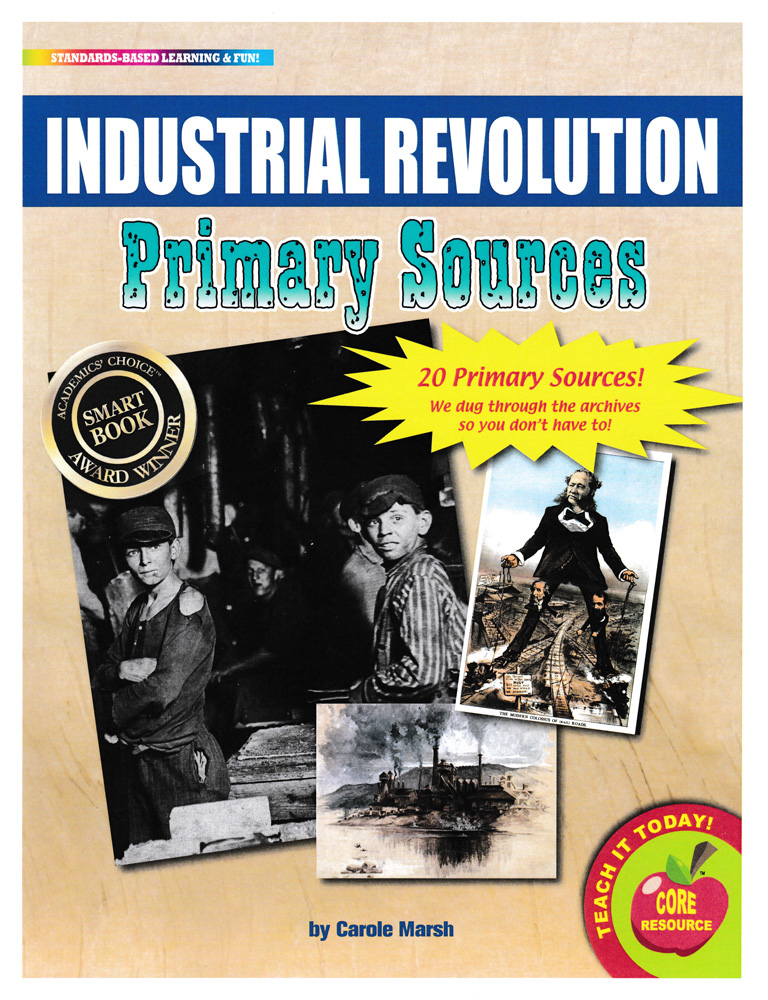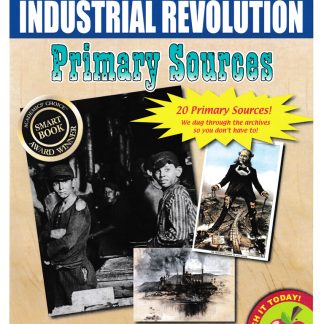Description
Industrial Revolution Primary Sources /emare just what teachers need to help students learn how to analyze primary sources in order to meet Common Core State Standards!Students participate in active learning by creating their own interpretations of history using historical documents. Students make observations, generate questions, organize information and ideas, think analytically, write persuasively or informatively, and cite evidence to support their opinions, hypotheses, and conclusions. Students learn how to integrate and evaluate information to deepen their understanding of historical events.The 20Industrial Revolution Primary Sources /emare: Photograph of young boys working in a glass factory at midnight dash; 1908 Photograph of children working in a mill in Macon, Georgia dash; 1909 Lithograph of the Erie Canal at Lockport, New York, circa 1855–the Erie Canal linked farms in the West to markets in the East Photograph of the Ben Campbell/em, a typical steamboat of the mid 1800s Advertisement for the Central Pacific Railroad and Union Pacific Railroad published the week the two rails’ lines were joined in Utah in 1869 Map showing the telegraph lines in operation, under contract, and contemplated, to complete the circuit of the globe dash; 1871 Photographs depicting Alexander Graham Bell and the telephone Political cartoon depicting Thomas Edison using his electric light bulb invention to shed light on the gas company monopoly dash; 1878 Political cartoon titled The Modern Colossus of (Rail) Roads /em–depicts railroad tycoons exerting control over the American railroad system dash; 1879 Photograph of Pennsylvania coal miners–coal was the primary fuel used during the Industrial Revolution dash; 1895 Painting titled Bethlehem Steel Works/em by Joseph Pennell–depicts Bethlehem Iron Company in Bethlehem, Pennsylvania dash; 1881 Images of Samuel Slater and Slater Mill Print showing bird’s eye view of the Chicago World’s Columbian Exposition–featured advancements in commerce and industry dash; 1893 Description of the Clermont/em–Robert Fulton’s first commercially successful steamboat dash; published 1895 Copy of $2 silver certificate from 1896–front side depicts the allegory ;ldquo;Science presenting Steam and Electricity to Commerce and Manufacture,;rdquo; while the back features Robert Fulton and Samuel Morse Photograph of tenement yard in New York City–living conditions for many workers during the Industrial Revolution were cramped and unsanitary dash; 1900 Newspaper article in The Tacoma Times/em (December 26, 1903) featuring the Wright Brothers’ first successful airplane flight Photograph of immigrant family arriving at Ellis Island from Italy in 1905–massive immigration to America beginning in the 1800s helped fuel the Industrial Revolution Photograph of Ford automobile assembly line dash; 1923 Photograph of a cotton gin–Eli Whitney’s cotton gin revolutionized agriculture in the American South beginning in the early 19th century dash; photo taken 2007Your students will: Think critically and analytically, interpret events, and question various perspectives of history. Participate in active learning by creating their own interpretations instead of memorizing facts and a writer’s interpretations. Integrate and evaluate information provided in diverse media formats to deepen their understanding of historical events. Create a more relevant and meaningful learning experience.span style=”color:#FF0000;”Download the Gallopade Free Online Teacher;#39;s Guide for Primary Sources PDF located in “Additional Info.”/spanAll levels. 8 x 11 inches each. Cardstock.




